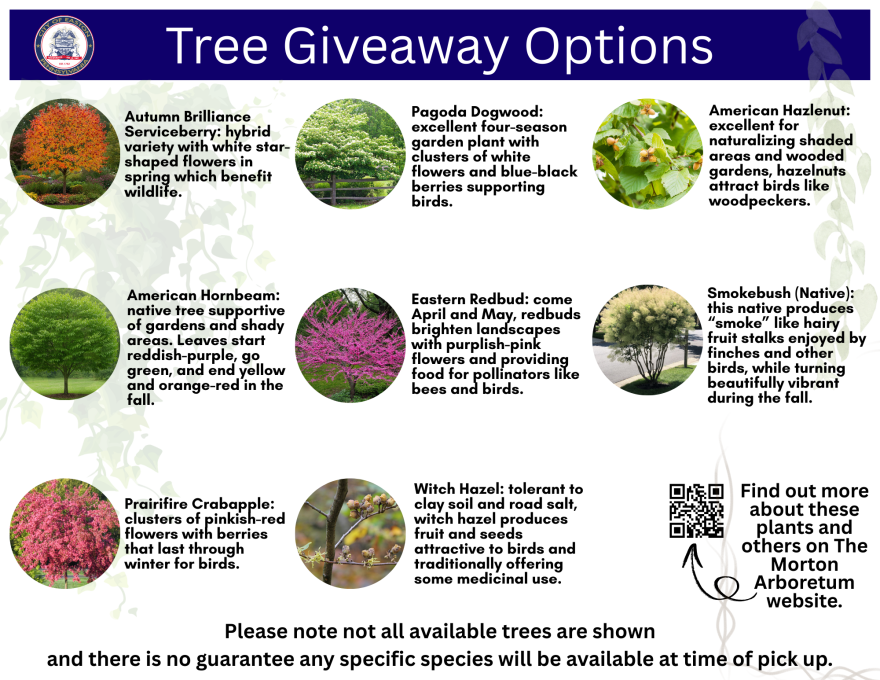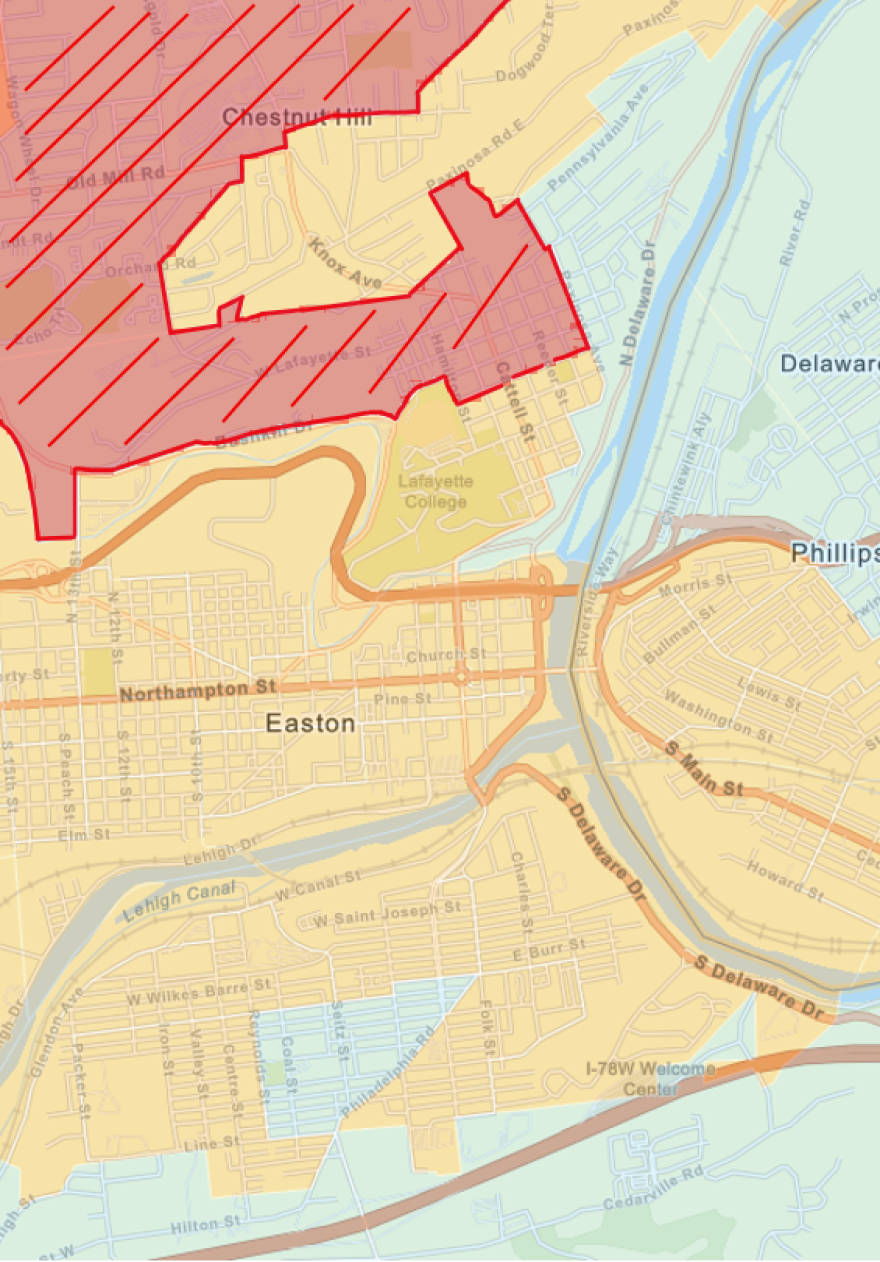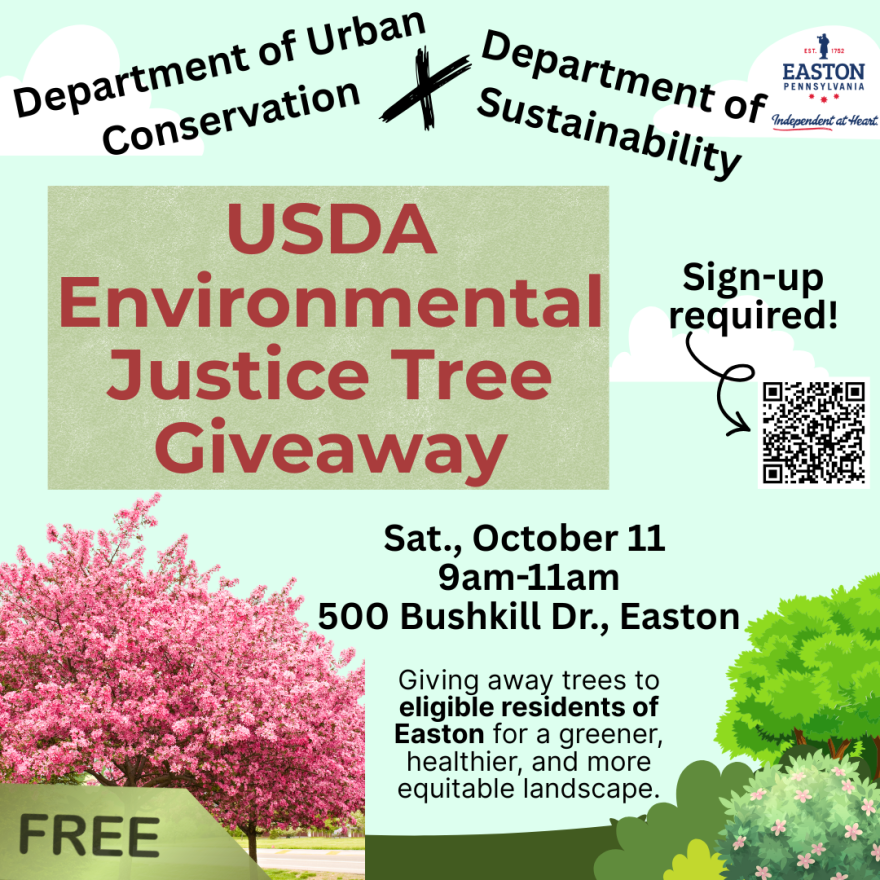EASTON, Pa — Officials are giving away 200 trees next week in an effort to boost environmental equity in areas of the city that need it most.
“It's always wonderful to provide trees to residents, regardless of where they live or who they are,” Brandon Sullivan, city sustainability coordinator, said.
“But, when you're able to provide trees to people who can't otherwise afford them or get them, that's how you start to make a difference, a meaningful difference, in people's lives.”
All property-owning residents in Environmental Justice Areas, which make up a large chunk of the city, are eligible to receive one free tree.
The giveaway, scheduled for 9 a.m. to 11 a.m. Saturday, Oct. 11, at the city’s Recycling Drop-off Center, 500 Bushkill Drive, is funded through a grant from the U.S. Department of Agriculture.
While the event is a first-come, first-serve model, with registration required, there are nearly 20 different species residents can choose from, including moonglow magnolia, prairifire crabapple, smokebush, Carolina silverbell and American hazelnut, as well as varieties of dogwood and witch hazel, among others.

“The trunks of the trees, they're going to average about maybe an inch to an inch and a half wide at the trunk,” Rob Christopher, city conservation manager, said.
“And they're probably, depending on the species, going to be anywhere from about four-foot tall to maybe eight-foot tall. It just depends on the type of tree.
“ … They're meant to be a smaller, medium species tree that will do better in smaller urban yards and a size that people are easy for them to put in their truck or car to just pick up and not heavy.”
‘Everyone has the right to green space’
It’s the second year the city has received federal funding through the grant, which runs for four years.
The Easton Urban Forest Equity Project in 2023 was awarded $1 million from the USDA’s Urban & Community Forestry Program, part of a “historic” $1.5 billion infusion of funding across the country. Pennsylvania received nearly $28 million spread across 12 projects.
To receive a tree, residents must own their property and live in a designated Environmental Justice Area, as described by the USDA — landlords and renters are not eligible.
Environmental Justice Areas, commonly referred to as EJ Areas, are typically characterized by lower-income and minority populations, and experience disproportionate rates of pollution and/or environmental issues.
The city has supplied a map showing what areas of the city are covered.

“The EJ Areas are going to be everything in the yellow, green or orange — the dark red with the hash through it are non-eligible areas,” Sullivan said.
“So, realistically, the only areas of Easton that are not eligible for this are going to be that western half of College Hill.”
Unfortunately, residents have no way of searching their address ahead of time to check eligibility. The USDA’s EJ area maps have been scrubbed from its website.
The day of his inauguration, President Donald Trump issued a sweeping executive order, rescinding a Biden-era rule calling for all federal agencies to create and publish an Environmental Justice Strategic Plan.
Since then, “all federal agencies have removed those plans from their websites or issued new policies rejecting environmental justice principles,” according to Harvard Law School’s Environmental and Energy Law Program.
“The maps that we have access to are actually provided by our grant manager, American Forest,” Sullivan said. “They have all of that saved, so we have access through that.”
Sometimes, residents can have a negative reaction, or even recoil, when it comes to environmental justice or equity, he said.
“Most fundamentally, for this tree giveaway, the best way to look at it is these are being given away to people who generally can't afford a tree otherwise."Brandon Sullivan, city sustainability coordinator
“But all it really means is providing for people in ways that they don't have the ability to provide for themselves,” Sullivan said.
“Most fundamentally, for this tree giveaway, the best way to look at it is these are being given away to people who generally can't afford a tree otherwise. And making sure that everyone has the right to green space, everyone has the right to a tree, matters.”
Tree-planting benefits
Planting a tree can have many benefits, from improving the environment to boosting home values.
“Trees are ways to cool down our temperatures in the summer, the way to warm our residences in the winter, a way to breathe clean air and fresh air and provide a home for wildlife, for kids and families to enjoy and witness — a way for all of us to connect to nature and connect and ground ourselves to what really matters the most."Brandon Sullivan, city sustainability coordinator
“Trees are ways to cool down our temperatures in the summer, the way to warm our residences in the winter, a way to breathe clean air and fresh air and provide a home for wildlife, for kids and families to enjoy and witness — a way for all of us to connect to nature and connect and ground ourselves to what really matters the most,” Sullivan said.
They can also help support pollinators and animals, Christopher said.
“A lot of these trees will flower and fruit, so they'll provide a lot of early spring and summer, even fall, blooming — like the witch hazels — to provide food for all different types of pollinators [and] small mammals.
“And it's the diversity, too, to add into the landscape. You never want to plant a monoculture.”

Planting trees can also help with storm water runoff and erosion, as well as capture pollution from the air, he added.
"I think people need to just really understand that when they're planting things like this in their yard, that it's not just for here and now, it's long term," Christopher said.
"And they need to think about the long term effects that those trees are going to have on their property and the whole community in general.
"And, that it's really an investment in their property to help raise the value and the beauty when they want to sell it."
Unlike street trees, those involved in the giveaway are meant for yards, meaning much less maintenance over time.
“As the tree grows, people [can] always trim off the lowest limbs, so if they're mowing around them, they're not in the way,” Christopher said.
“Or a lot of people do like them natural, if they have the room.”
The trees will only require minimal pruning as it grows, he said, but several species are shrub-like, and won’t require much work at all.
Both Sullivan and Christopher will be at the event to answer questions and provide information.
“When it comes to taking care of them, we do have printed-out guides and sheets that we will provide for every tree on care and best management practices,” Sullivan said.
“So, if someone gets the dogwood, we'll give them a sheet detailing the care necessary to ensure the dogwood succeeds, that will include soil type preferences, water frequencies, heights that you can expect in growth.”
Residents who register will get an email confirming eligibility. For more information, go to the city’s website.


